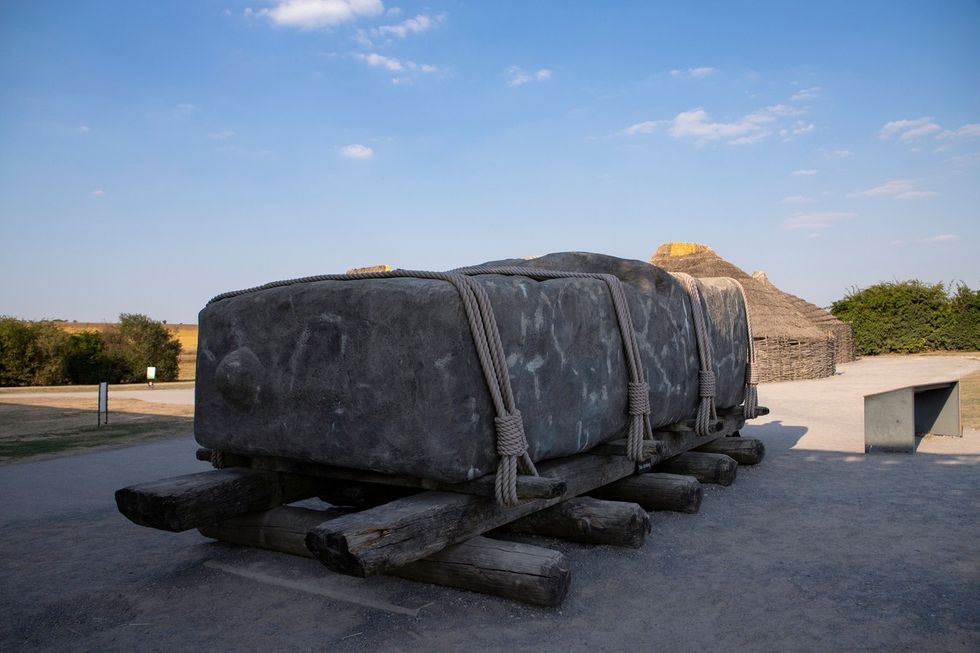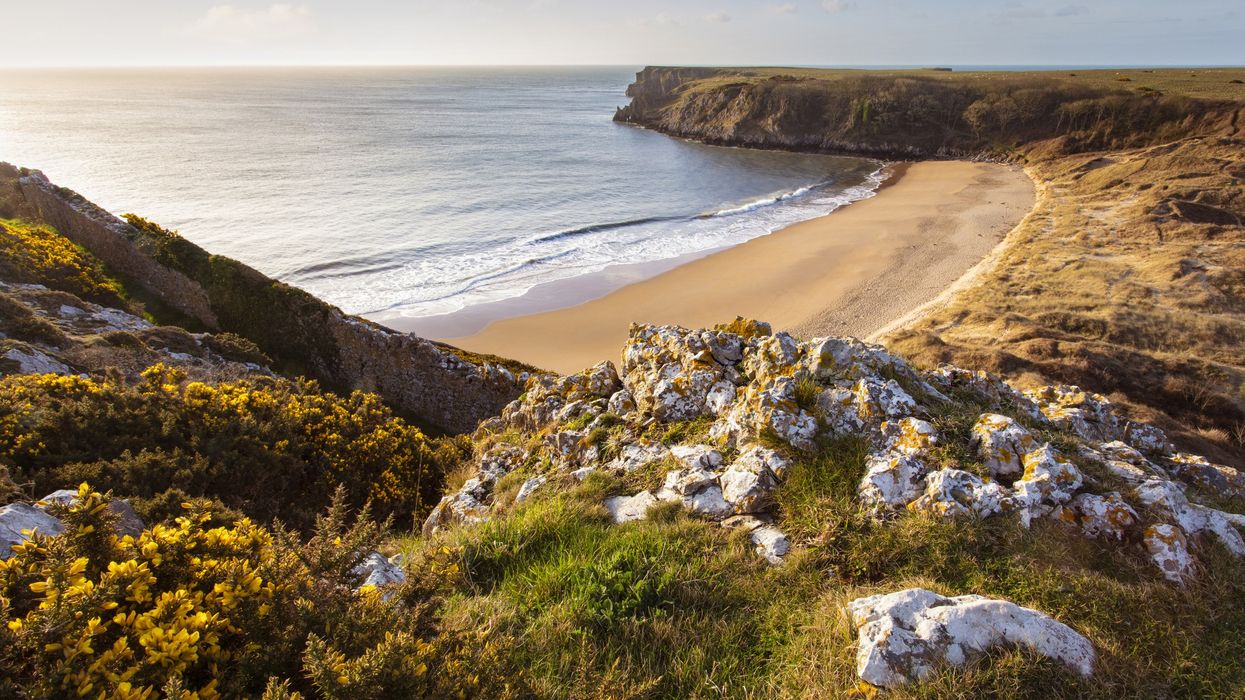Located on the historic Salisbury Plain in Wiltshire, England, Stonehenge is a prehistoric marvel that enchants visitors with its towering stones and enigmatic history. The monument, a stunning example of ancient architecture, consists of an outer ring of vertical sarsen standing stones, each around 13 feet high, connected by horizontal lintels. Nestled within this iconic circle are smaller bluestones, and inside those, free-standing trilithons—bulkier stones that form a breathtaking stone landscape.
Stonehenge has a rich history that dates back thousands of years, with construction believed to have taken place in several phases from around 3100 BC to 1600 BC. The surrounding circular earth bank and ditch mark the earliest phase of the monument, around 3100 BC. Radiocarbon dating suggests the positioning of the bluestones between 2400 and 2200 BC, though they may have been there as early as 3000 BC.
This renowned landmark has left scholars and tourists alike in awe, as it holds secrets that continue to fuel theories and debates. Some speculate Stonehenge's purpose as a celestial observatory, religious site, or even a healing sanctuary due to the high number of burials found in the area. Despite its mystery, Stonehenge remains a powerful symbol of cultural heritage, drawing visitors from around the world.

One fascinating discovery is the unusual acoustic properties of the igneous bluestones. When struck, these stones produce a loud, resonant clang, potentially explaining why such stones were transported from as far as southwestern Wales—a monumental feat in its time.
Located on the historic Salisbury Plain in Wiltshire, England, Stonehenge is a prehistoric marvel that enchants visitors with its towering stones and enigmatic history. The monument, a stunning example of ancient architecture, consists of an outer ring of vertical sarsen standing stones, each around 13 feet high, connected by horizontal lintels. Nestled within this iconic circle are smaller bluestones, and inside those, free-standing trilithons—bulkier stones that form a breathtaking stone landscape.
Top Attractions
The Stone Circle: The central attraction of the site, Stonehenge's Stone Circle, is composed of massive sarsen and bluestone formations arranged in a circular layout. These stones stand tall and proud, carrying the weight of centuries of history.
The Visitor Center: The Stonehenge Visitor Center offers informative exhibitions, including interactive displays, reconstructed Neolithic houses, and artefacts discovered during archaeological digs.
The Heel Stone: This large stone stands near the entrance of the site and aligns with the summer solstice sunrise. It's a significant aspect of the monument's astronomical orientation.
Stonehenge Landscape: Explore the wider landscape surrounding Stonehenge, which includes the Cursus, Durrington Walls, and Woodhenge. These ancient sites provide additional context to the Stonehenge complex.
How to Reach
By Car: Stonehenge is located approximately 85 miles (137 km) southwest of London. The journey by car takes around 1.5 to 2 hours via the A303 road. There is parking available on site for visitors.
By Train: Take a train from London Waterloo to Salisbury, which takes about 1.5 hours. From Salisbury, you can catch a Stonehenge Tour bus or a taxi to the site, which is roughly 9 miles away.
By Bus: National Express and other coach services offer routes from London to Salisbury. From there, you can take a local bus or taxi to Stonehenge.
Guided Tours: There are numerous tour operators offering day trips from London and other nearby cities, providing convenient transportation and guided experiences at the site.

Nearby Places
Old Sarum: Located just a short drive from Stonehenge, Old Sarum is an ancient hill fort with a rich history. Visitors can explore the ruins of a royal castle and cathedral.
Salisbury Cathedral: Known for its stunning architecture and tallest church spire in the UK, Salisbury Cathedral is a must-visit destination nearby. The cathedral houses one of the original copies of the Magna Carta.
Avebury: Another prehistoric stone circle, Avebury is larger than Stonehenge and offers a different but equally intriguing experience. Stroll through the village and explore the ancient stones.
Marlborough: This charming market town is perfect for a stroll and offers quaint shops, historic buildings, and cosy cafes.
Stonehenge is a timeless wonder that beckons visitors to immerse themselves in its captivating past. Whether you are drawn by its historic significance or its serene ambience, Stonehenge promises an unforgettable experience that will leave you with lasting memories.
















 Many of these beaches are tidal and best enjoyed at low tideiStock
Many of these beaches are tidal and best enjoyed at low tideiStock It’s also unofficially clothing-optionaliStock
It’s also unofficially clothing-optionaliStock Framed by the turquoise seaiStock
Framed by the turquoise seaiStock It’s best visited early or late in the dayiStock
It’s best visited early or late in the dayiStock

